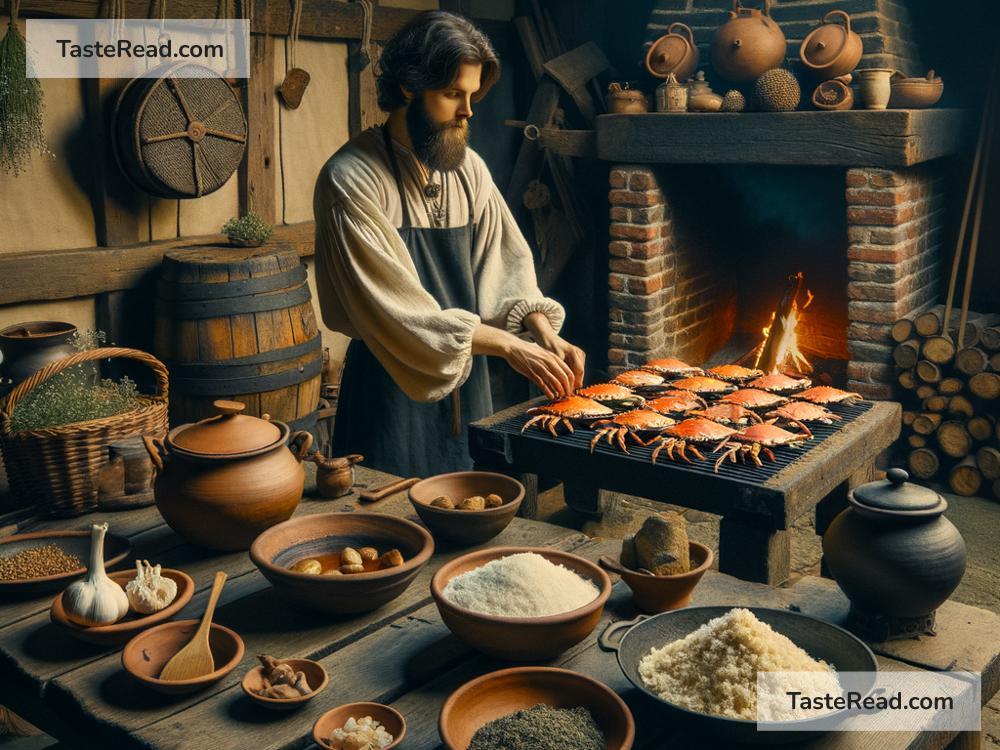Origins of the First Crab Cake in Ancient Tales: A Delicious Journey
Crab cakes are one of the most beloved seafood dishes in the world. They’re crispy, savory, and packed with the rich flavor of crab meat. But where did crab cakes come from? How old is this tasty treat? Believe it or not, the idea of combining crab meat with seasonings and shaping it into cakes may go far back in history—possibly even before recipes were written down.
In this article, we’ll dive into the origins of crab cakes, exploring ancient tales, coastal traditions, and how people might have created this dish long ago. Let’s take a look at the past to understand how crab cakes became the treasure they are today.
Crabs: The Ancient Delicacy
Crabs have been part of human diets for thousands of years. Early civilizations that lived near coastlines discovered the joy of eating crab meat. It was an easy food to catch, nutritious, and full of flavor. Crabs were plentiful in oceans, rivers, and bays, so people across different parts of the world may have included them in their meals.
Archaeological evidence shows that ancient people used nets, traps, and even their bare hands to catch crabs. Once they had the crabs, they boiled or roasted them on open fires. While there is no direct evidence of crab cakes as we know them today, the idea of mixing crab meat with other ingredients could have been born out of basic cooking practices.
The Idea of Mixing Crab Meat
Ancient cooks often combined foods to create new dishes. This practice happened out of necessity—people wanted to stretch their food supplies and create meals that were filling but economical. Crab meat was probably no exception to this rule.
For example, imagine a coastal community thousands of years ago catching crabs and preparing dinner. They might have shredded the crab meat to make it easier to eat. Then, to make the meal go further, they might have mixed the shredded meat with crushed grains, herbs, or mashed vegetables. The result? A flavorful mixture shaped into patties that could be roasted or fried over open flames.
In many ways, this simple cooking method resembles what we do today when making crab cakes.
Ancient Mediterranean Tales
One possible origin of crab cakes can be linked to ancient Mediterranean food traditions. Cultures like the Greeks and Romans were famous for their innovative cooking styles. They wrote about seafood dishes, including recipes that involved mixing fish or shellfish with bread, flour, or herbs. While crab wasn’t always specifically mentioned, the wide use of crustaceans in their cuisine suggests that crab cakes might have originated in this region.
Take, for example, Apicius—a Roman cook during the first century AD—whose recipes influenced culinary traditions in Europe. Apicius wrote about seafood patties made from fish mixed with spices and bread crumbs. Could similar recipes have existed for crab meat? It’s very possible.
Asian Influence: The Ancient Spice Trail
Asian cultures also embraced crab as an important part of their diets. In countries like China, Japan, and India, crab meat was valued for its flavor, versatility, and nutritional benefits. Ancient cooks on the spice trail might have experimented with mixing crab meat and spices to create savory patties, similar to crab cakes.
For instance, Chinese dumplings (known as “jiaozi”) often used crab meat as a filling, while Indian coastal cuisines incorporated crab into their spiced dishes. The blending of crab meat with spices and starchy fillers like rice or flour might have produced early versions of crab cakes.
The New World Connection
While ancient civilizations introduced the concept of mixing seafood, crab cakes as we know them began to emerge in the Americas. Native peoples living along the Chesapeake Bay—home to blue crabs—likely enjoyed crab meat as part of their diets. They might have come up with innovative ways to prepare crab by exploring local ingredients.
By the 18th and 19th centuries, African-American culinary traditions shaped the development of crab cakes. Through inventiveness, enslaved cooks took simple foods like crab and turned them into flavorful masterpieces. Using crab, bread crumbs, egg, and spices, they developed recipes that were later handed down through generations and shared across communities.
Crab Cakes in Modern Times
In modern history, crab cakes rose to fame in Maryland, USA. This state’s coastal location and rich supply of blue crabs made it a hot spot for crab cake recipes. By the 20th century, crab cakes became a signature dish of American seafood restaurants and homes alike.
Today, the recipe continues to evolve, with chefs adding their own twists—from spicy seasoning blends to gourmet dipping sauces. However, the heart of the crab cake stays the same: fresh crab meat shaped into a delicious golden-brown patty.
Conclusion
Although the exact origins of crab cakes remain a mystery, it is clear that this dish was born out of a love for crab and creativity in the kitchen. From ancient Mediterranean cooks experimenting with seafood patties to coastal communities discovering ways to stretch their food supplies, crab cakes seem to draw inspiration from many cultures and traditions.
Every bite of a crab cake is a nod to history—a celebration of humanity’s ability to turn simple ingredients into something extraordinary. So the next time you enjoy a crab cake, think about the journey those flavors took, from ancient tales to your plate. Bon appétit!


